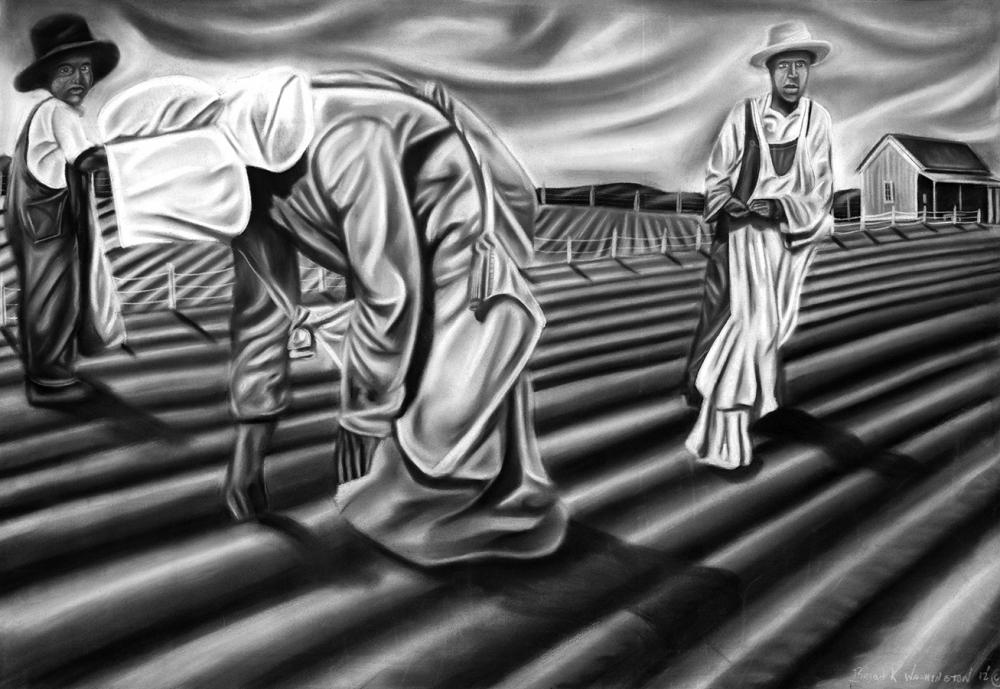A Joyful Sorrow

In “A Joyful Sorrow,” Washington illustrates the inherent contradiction raised by the institution of sharecropping. While sharecropping was touted as a prospect of new economic opportunity for freed slaves, it truly functioned to ensure African Americans remained poor and virtually locked out of any opportunity for land ownership or basic human rights. In this sense, sharecroppers and their families experienced the “joyful sorrow” of superficial freedom, tinged with the shackles of a still existent economic and social slavery.
The central figure in “A Joyful Sorrow,” is a mother figure, whose back is distorted by the constant physical pain of working the fields day after day. Her efforts, as well as those of her children, are in a futile attempt to repay the family’s never-ending debt owed to the property owners. Her face is completely obscured in this back-breaking posture, a subtle detail invoked by Washington to emphasize the lack of humanity afforded to freed slaves in Reconstruction years of the American South.